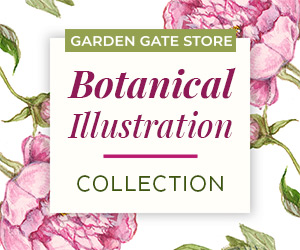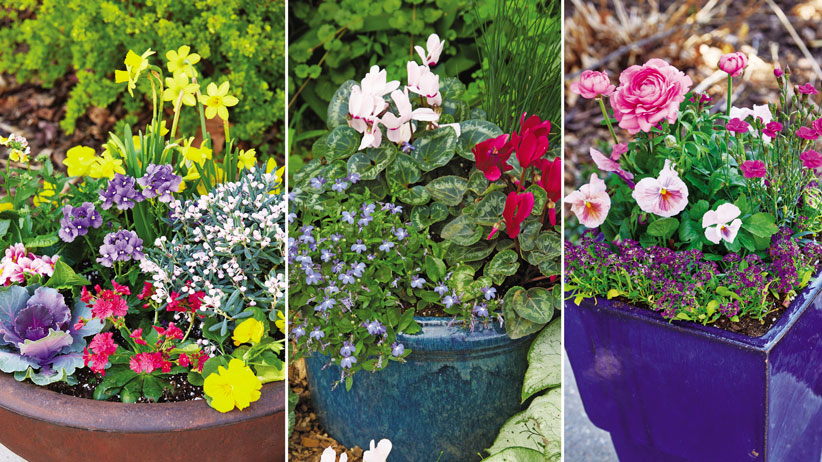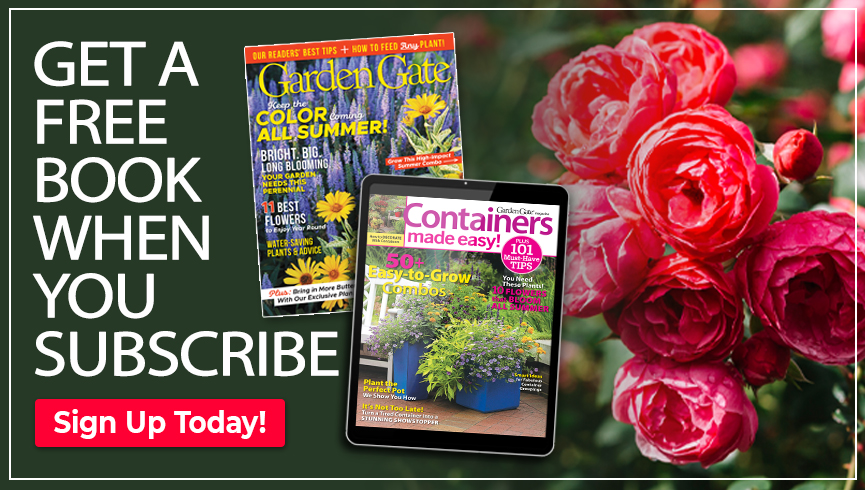
Incoporate goldenrod in your garden design
If there’s one quintessential perennial for fall color, it’s goldenrod. What other plant can create such exuberant masses of golden yellow blooms to echo the changing fall foliage? From sun to shade and wet to dry soil, there’s one to suit most garden conditions.
3 Tips for using goldenrod in the garden
- Goldenrod makes itself right at home in large borders, managed meadows and naturalized areas.
- This is a perennial that tends to look better in mass plantings, so plant at least three of whichever type you choose. Some have feathery plume-shaped flowers; others are spiky or flat-topped like yarrow.
- Pay close attention to the mature height when you’re shopping for goldenrod since they can range from 1 to 6 feet tall.
Now let’s see how you can incorporate this glitzy gold perennial into your garden!
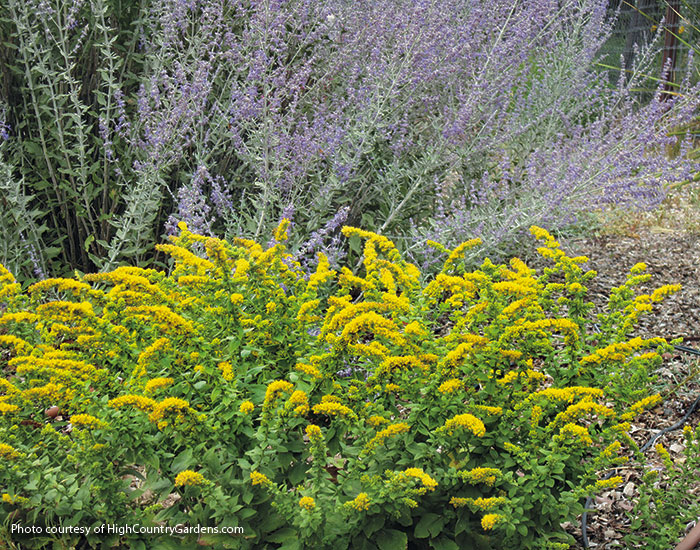
Use shorter goldenrod to fill the front of the border
Topping out at 3 feet, shorter goldenrods look best when you plant them near the front to middle of the border. One of my favorites is ‘Golden Fleece’. Its bright yellow sprays of flowers remind me of party streamers when they burst into bloom on arching stems. Its heart-shaped, semi-evergreen leaves form a low mound so until it blooms, the foliage acts like a short ground cover.
Plants that combine well with shorter goldenrods
- ‘Golden Fleece’ is especially showy when you pair it with blue- or purple-flowered perennials like the Russian sage in the photo above. Imagine how that energetic pop of yellow would look against the dramatic violet blue backdrop of monkshood or ‘Purple Dome’ New England asters in fall.
- Native grasses like prairie dropseed and little bluestem also make good planting partners since they all peak at the same time of year.
- Many of the shorter goldenrods prefer dry to average soils and full sun. A few more well-behaved varieties for those conditions include ‘Wichita Mountains’, a heat- and drought-tolerant variety, ‘Golden Baby’ (also known as ‘Goldkind’) and showy goldenrod, a spreading ground cover.
You May Also Like:
The best goldenrods for your garden
Butterfly-friendly garden plan
Drought-tolerant perennials
4 fall perennials butterflies love

Use goldenrod to grow a gorgeous meadow
Some of the most incredible naturalized plantings you’ll find exist in the muddy swales of sunny meadows. Many of the taller native species are very flexible about where they’ll grow, tolerating almost any soil type from wet clay to dry sand. But keep in mind they also tend to be faster spreading than some of the shorter cultivars, so they’ll need plenty of room to make an impact. Stiff goldenrod above is one that spreads readily by underground rhizomes and by seed. Rather than having feathery plumes like many species, it produces huge, flat-topped panicles up to a foot across. They make an ideal landing pad for monarch butterflies who tend to prefer this species, and songbirds who use this plant as an important late-season food source.
Tall, moisture-loving native perennials to partner with goldenrod
Plant the plants below with goldenrod to create a moist meadow that comes alive in festive hues of gold, red and purple from late summer into fall. Then, leave their ornamental seed heads standing through winter to provide food for birds and something pretty to look at when the garden is blanketed in snow.
- Ironweed
- Cardinal flower
- Joe-Pye weed
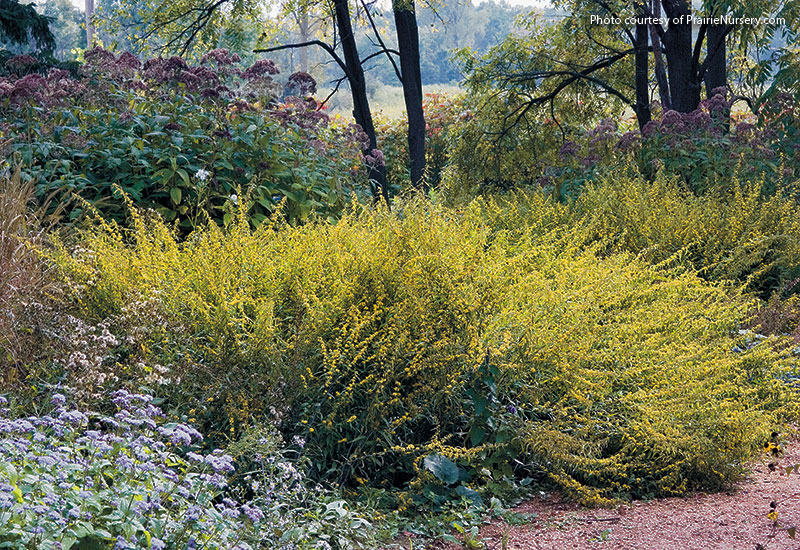
Brighten up a shade garden with goldenrod
A few species of goldenrod are native to woodlands, so they grow better with protection from the hot sun. Blue-stemmed goldenrod in the photo above is beautiful in mass plantings. It has a unique shape in that most of its stems grow horizontally, forming a low, broad mound in the landscape. Blue-stemmed goldenrod will reseed where it’s growing happily. Luminous shades of yellow are important to include in shade garden designs — yellow acts like a light bulb in dark spaces.
Other bright plants to include in the shade garden
When designing a shade border, I always make sure to include something yellow or chartreuse at least every 10 feet and repeat it down the line to unify the planting. These companions also brighten up the space:
- Lavender-blue hardy ageratum
- White-flowered wood aster







